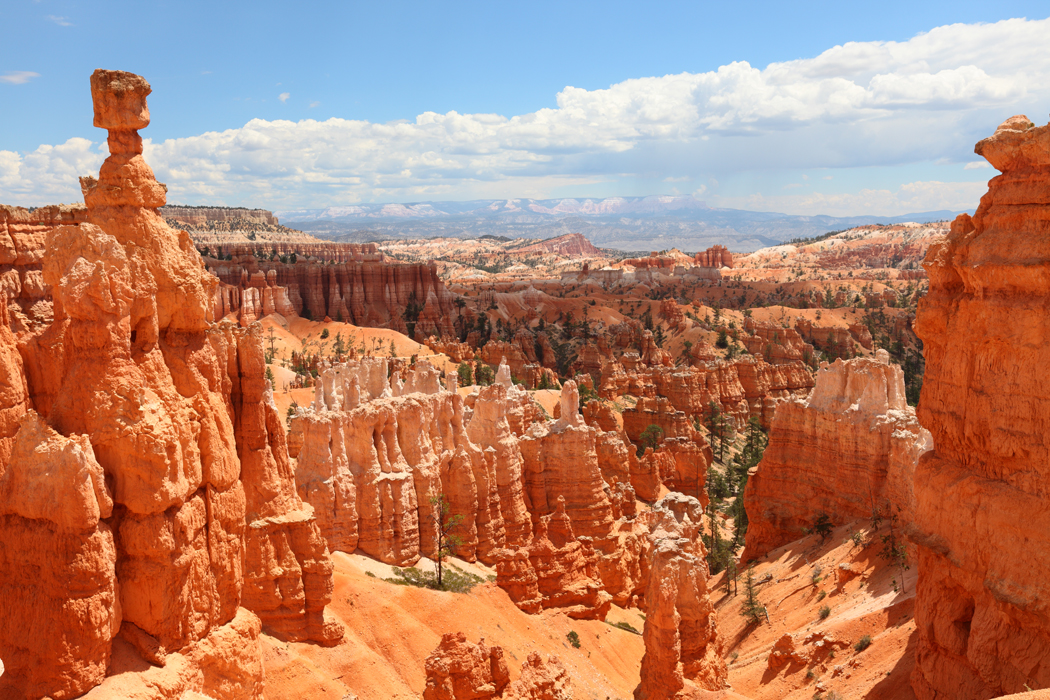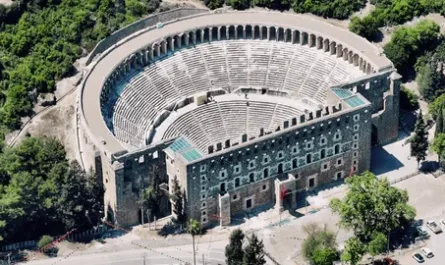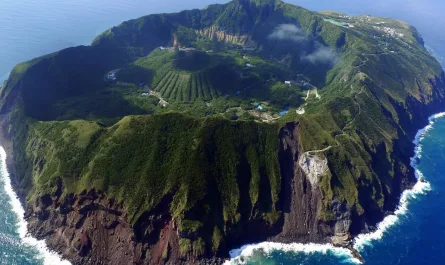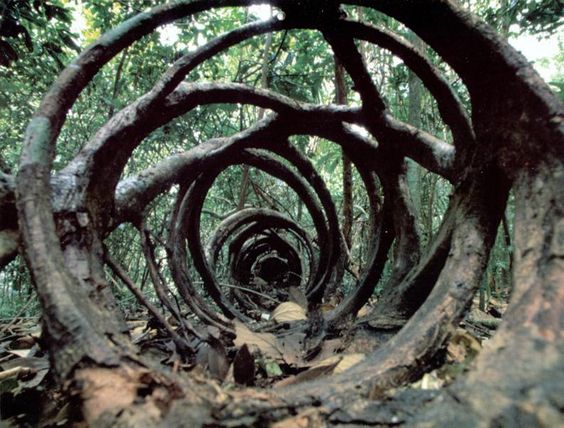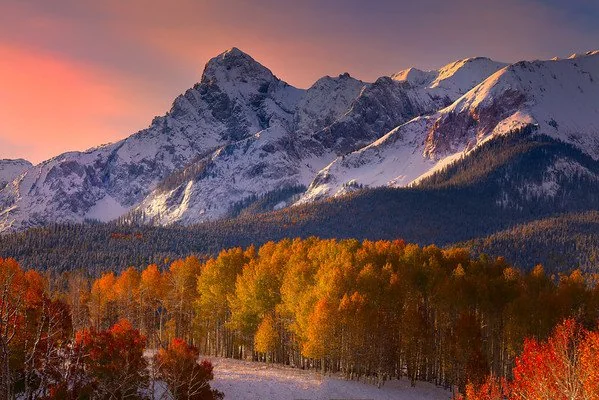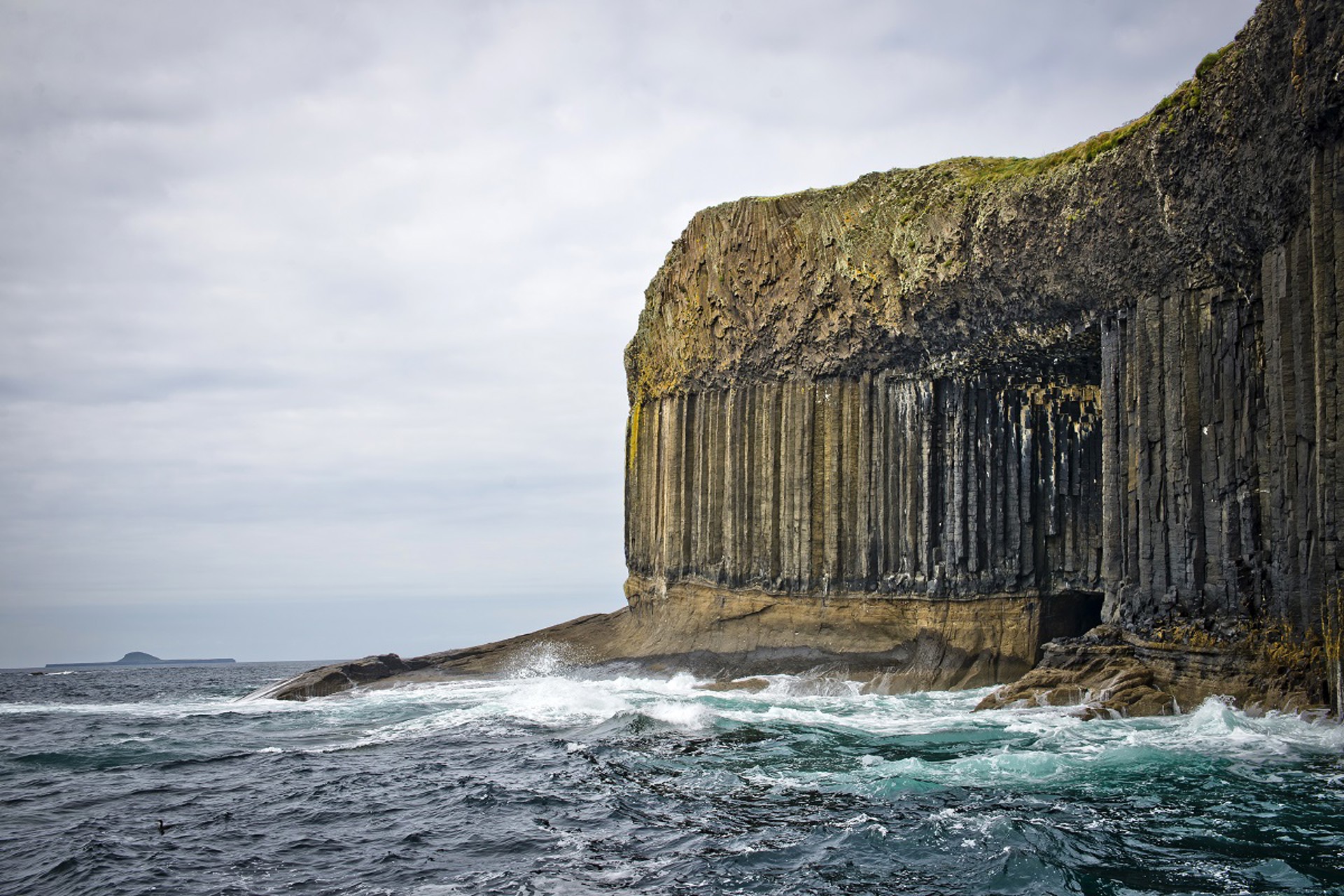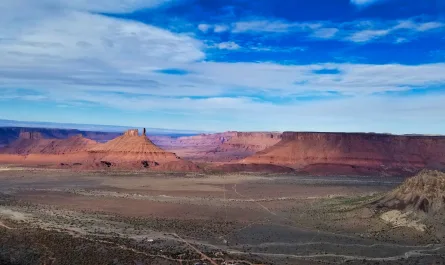High atop the Paunsaugunt Plateau in southern Utah, Bryce Canyon National Park offers a landscape that defies imagination. The aerial view in a recent photo captures its essence: a sprawling amphitheater of vibrant red-orange hoodoos, sculpted over 60 million years, with a surreal circular sinkhole stealing the scene. This isn’t a true canyon but a series of natural bowls, carved by frost-wedging and monsoon rains into the Claron limestone. Let’s dive into what makes this park—and that striking image—so awe-inspiring.
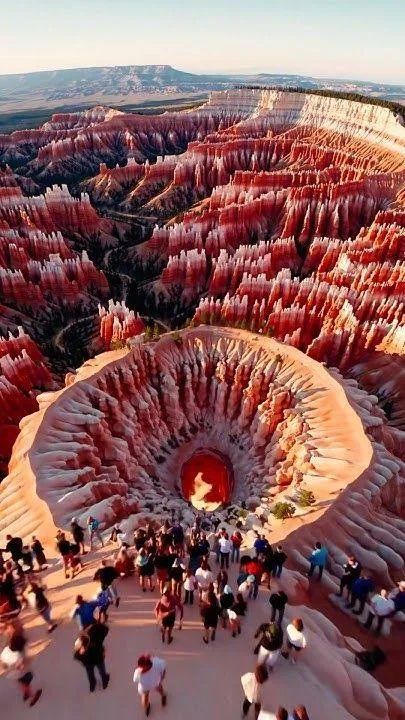
A Landscape Carved by Time
Bryce Canyon’s hoodoos—tall, thin spires rising like flaming pillars—are the stars of the show. Formed over millions of years, these formations owe their existence to the freeze-thaw cycle cracking the limestone, followed by rain eroding the softer layers. The resulting colors—reds from iron oxides, purples from manganese—ignite under the sunlight, casting long shadows across the canyon floor. The photo, likely taken at sunrise or late afternoon, highlights this fiery palette, turning the ridges into a glowing masterpiece.
At the center of the image, a circular sinkhole emerges with perfect symmetry, a stark contrast to the chaotic elegance of the hoodoos. This natural depression, possibly a collapse feature or eroded cave system, folds the terrain inward as if revealing the Earth’s hidden core. The dark center draws the eye, while the warm light bathes the surrounding spires, creating a sense of depth and mystery.
The Human Touch
Tourists line the sinkhole’s rim in the photo, their small figures dwarfed by the vastness below. Dressed in casual clothes, they peer over the edge or snap photos, mirroring the breathless awe of standing at such a spot. This human presence underscores the park’s grand scale, connecting to the feeling of the Earth “speaking” through light and silence. At 01:38 AM EDT on October 11, 2025 (11:38 PM MDT on October 10, 2025, in Utah), the park is quiet now, but this daytime scene captures its living energy.
The Science Behind the Beauty
Bryce Canyon’s story began 60 million years ago when the region was submerged under a lake, depositing the limestone that now shapes the park. Uplift and erosion exposed these layers, with the alternating colors reflecting mineral content. The sinkhole likely formed from further erosion or a collapse of underlying sediment, a process still at work today. Spanning 35,835 acres at 8,000–9,000 feet elevation, the park also boasts International Dark Sky status, offering stellar night views—though the daytime hoodoos steal the spotlight here.
A Moment of Awe
Standing at the rim, as the photo suggests, feels like stepping into a living artwork. The shadows stretch like fingers across the canyon, and the stillness amidst the fierce landscape invites reflection. This isn’t just a geological marvel—it’s a connection to the Earth’s long history. The sinkhole adds an otherworldly intrigue, hinting at hidden depths beneath the surface.
Whether you’re hiking the Navajo Loop, gazing from Inspiration Point, or simply soaking in the view, Bryce Canyon reminds us of nature’s patience and power. Plan a visit to witness this fiery amphitheater, where hoodoos and sinkholes tell a story millions of years in the making.
Red Rocks, Pink Cliffs, and Endless Vistas
Thor’s Hammer, monstrous hoodoos and a Sinking Ship. Bryce Canyon’s red-orange-pink amphitheaters stage a Norse myth 70 million years in the making.
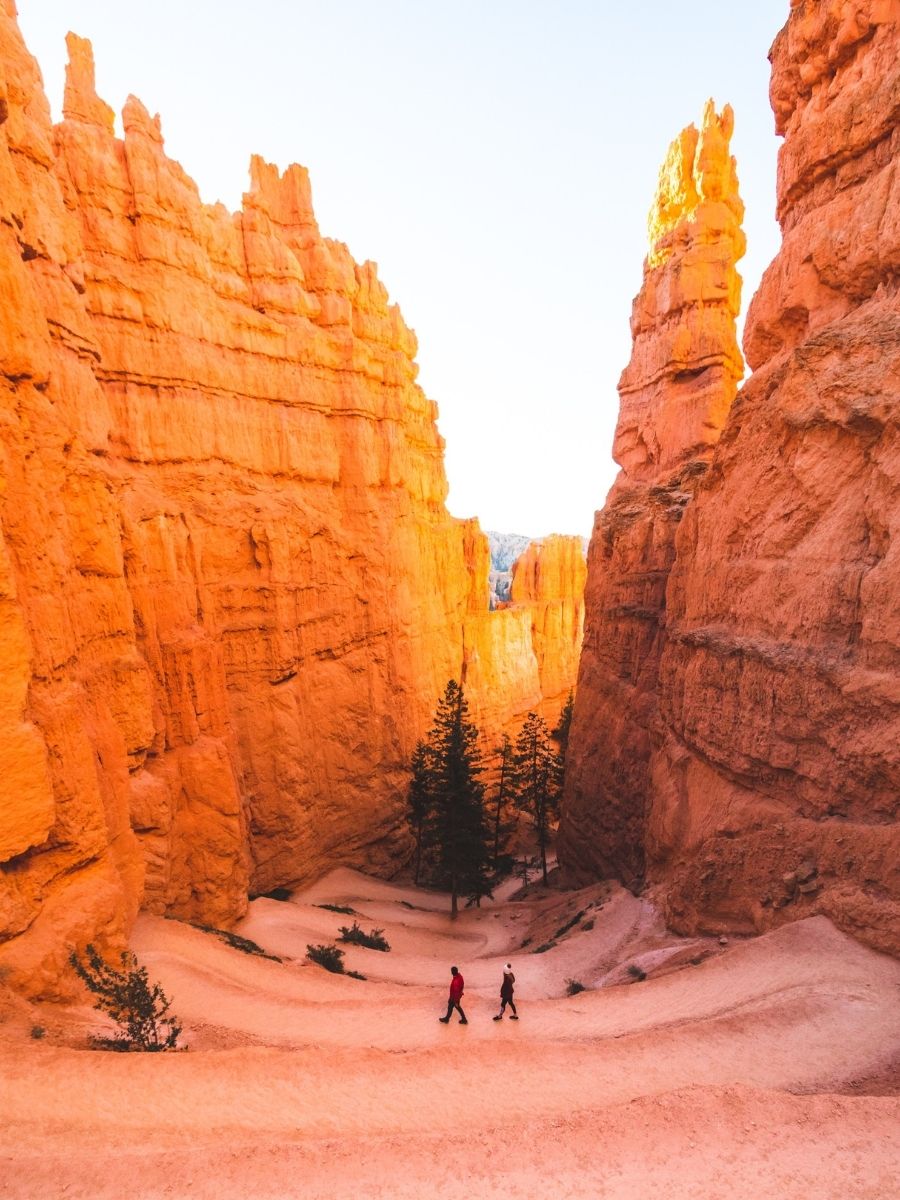
Wind, water and time have eroded Bryce Canyon National Park’s sandstone cliffs into otherworldly characters plucked from the unconscious of a mad Viking. Rows of humanoid pillars crosshatched by rock strata look almost intentional but perfectly surreal. So silent, eerie and beautiful. So improbable it has to be true.

Planning Your Trip to Bryce Canyon?
Bryce Canyon National Park in Southwestern Utah is famous for the largest collection of hoodoos—the distinctive rock formations at Bryce—in the world.

Bryce Canyon is also home to horseshoe-shaped amphitheaters carved from the eastern edge of the Paunsaugunt Plateau, scenic vistas, and the dark night sky. Visitors can expect spectacular hiking, camping, endless outdoor ranger activities, and even a Prairie Dog Festival.
Because the park covers a vertical distance of over 2,000 feet, it exists in three distinct climatic zones: spruce or fir forest, Ponderosa Pine forest, and Pinyon Pine or juniper forest.
Bryce Canyon first became a tourist destination in 1916 with Union Pacific. It was then declared a National Moument in 1923, and officially established as a National Park in 1928.
(What’s the Pantone number for “Leif Erikson’s Beard”?) The canyon’s epic comes alive as you move through the 37-mile circuit — especially as the sun rises and sets.
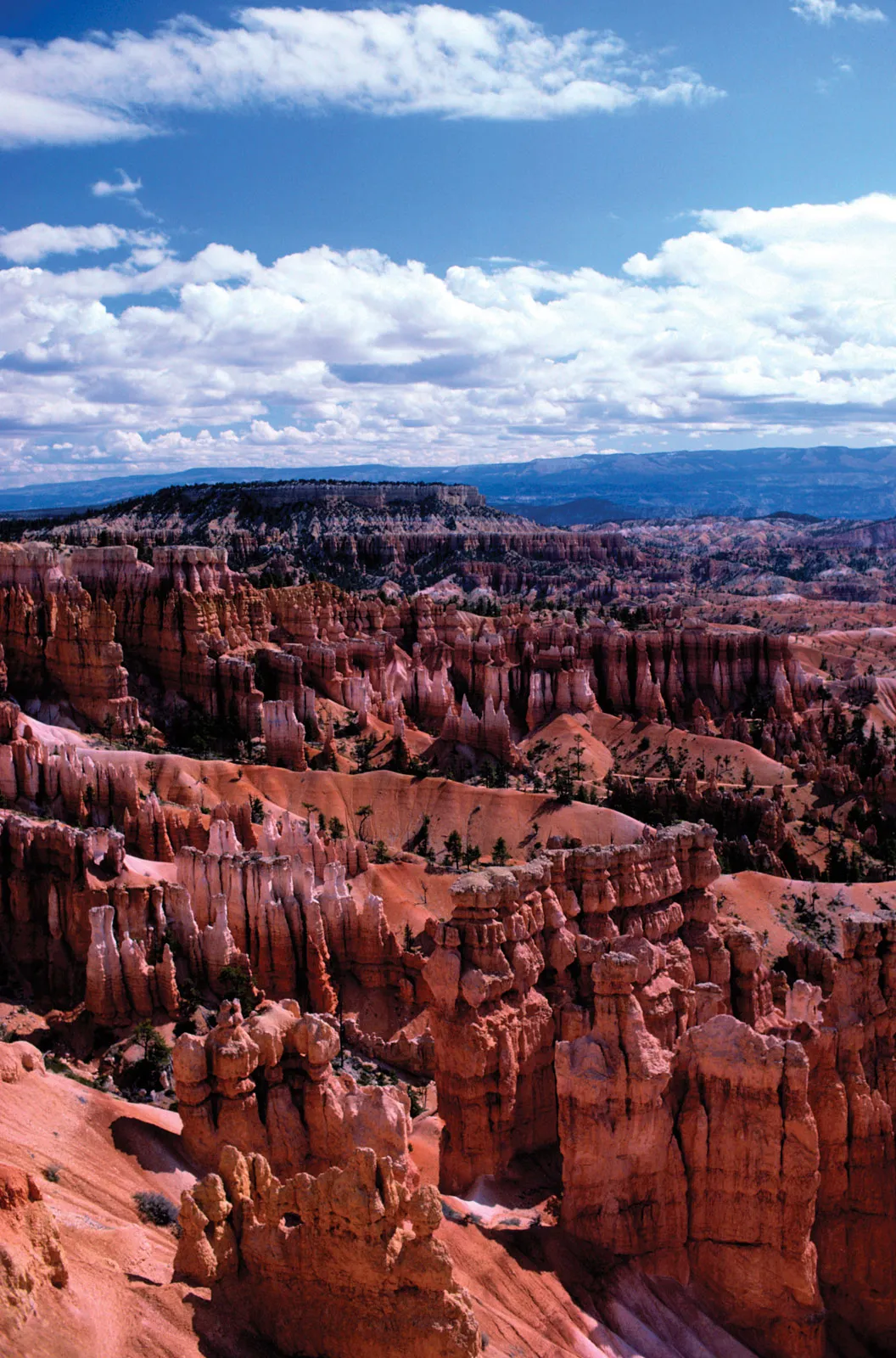
You can learn a lot about yourself looking into Bryce Amphitheater. Do you see a purgatorial cavern crawling with demons? …beatific angels lining the stadium of heaven? …the Claron Formation’s variously dense, variously iron-rich layers of mud-, silt- and limestone, cut up by water and frost in an 800-foot cross section of the Paunsaugunt Plateau that lays bare the geologic record since the last dinosaurs bought the farm? See what you want and interpret accordingly. (It’s a shame Sigmund Freud never hiked the Fairyland Loop.)
Speaking of frost, don’t pack for Zion when you’re going to Bryce, which is a full 18˚F cooler. The rim reaches 9,100 feet above sea level, so July peaks around 80˚F and winter snow sticks around until April. (Yeah, snow. Lots of it. Brian Head Ski Resort is just up the road. Enjoy the desert paradox.) It’s a year-round national park: comfortable all summer and snowy hoodoos make for gorgeous cross-country skiing winter to spring.
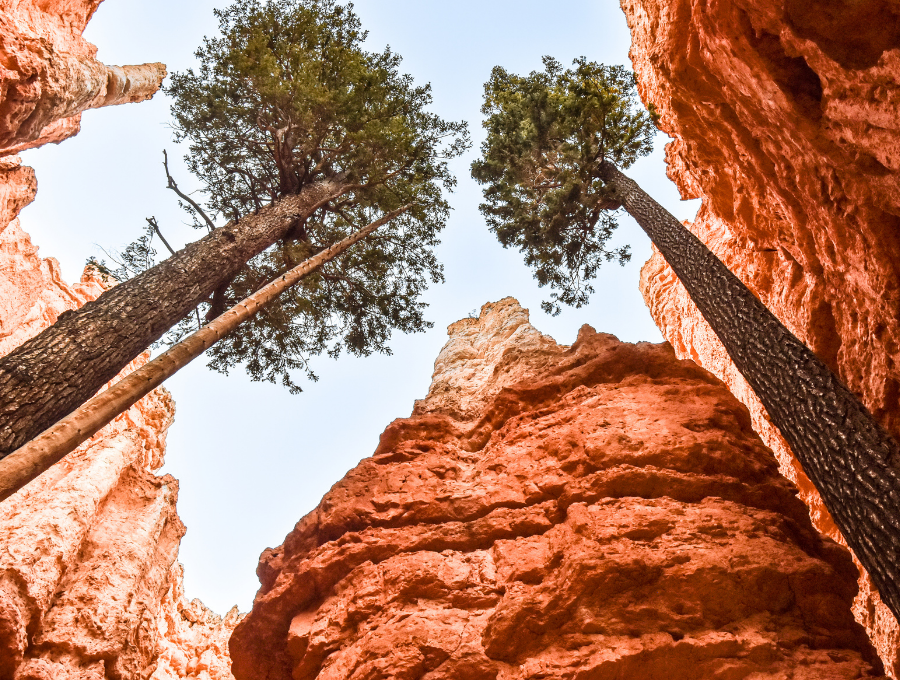
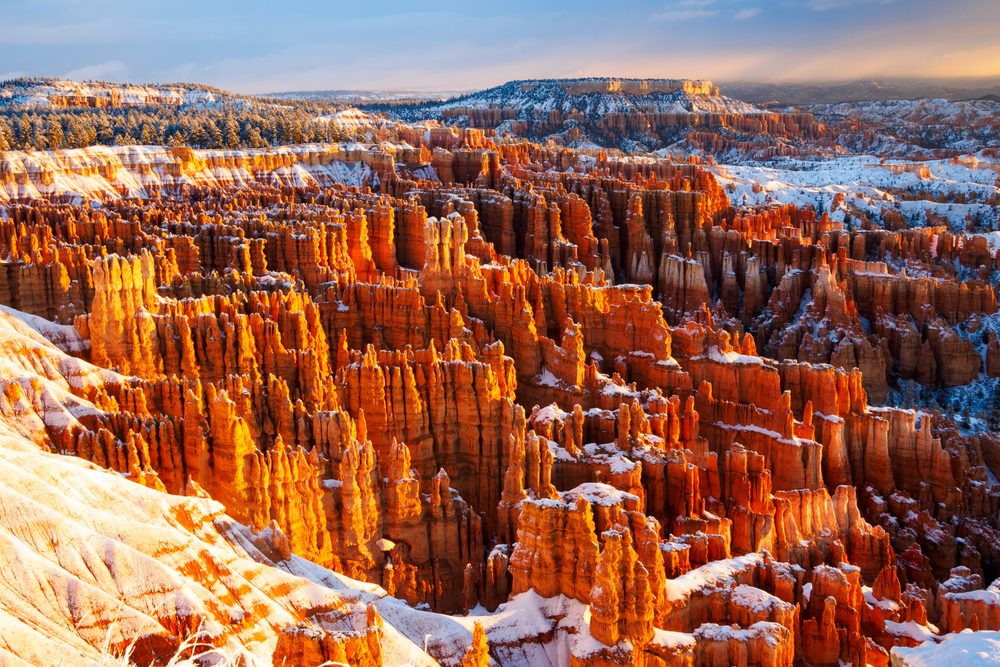
Bike it, hike it, snowshoe or ride a horse. If you don’t want to park, hop on the shuttle and people-watch between viewpoints. Take a cameraful of pictures no one will understand and let the giant yellow-pink monsters haunt your dreams.
Bryce Canyon National Park is located in southwestern Utah, not far from Zion National Park – just a scenic hour-and-a-half drive away. Below are directions to Bryce Canyon from some notable nearby destinations.
From Zion National Park (72 miles)
Take Hwy 9 east toward Mt. Carmel Junction. Take Hwy 89 north for 43 miles, then turn right and head east on Hwy 12. Follow the signs to Bryce Canyon National Park.
From Salt Lake City, UT (268 miles)
Take I-15 S toward Las Vegas, NV for 213 miles. Take exit 95 and head southeast on Hwy 20 to Hwy 89 south, then Hwy 12 east. Follow the signs to Bryce Canyon National Park.
From Las Vegas, NV (260 miles)
Take I-15 N toward Salt Lake City. Take exit 95 and head southeast on Hwy 20 to Hwy 89 south, then Hwy 12 east. Follow the signs to Bryce Canyon National Park.
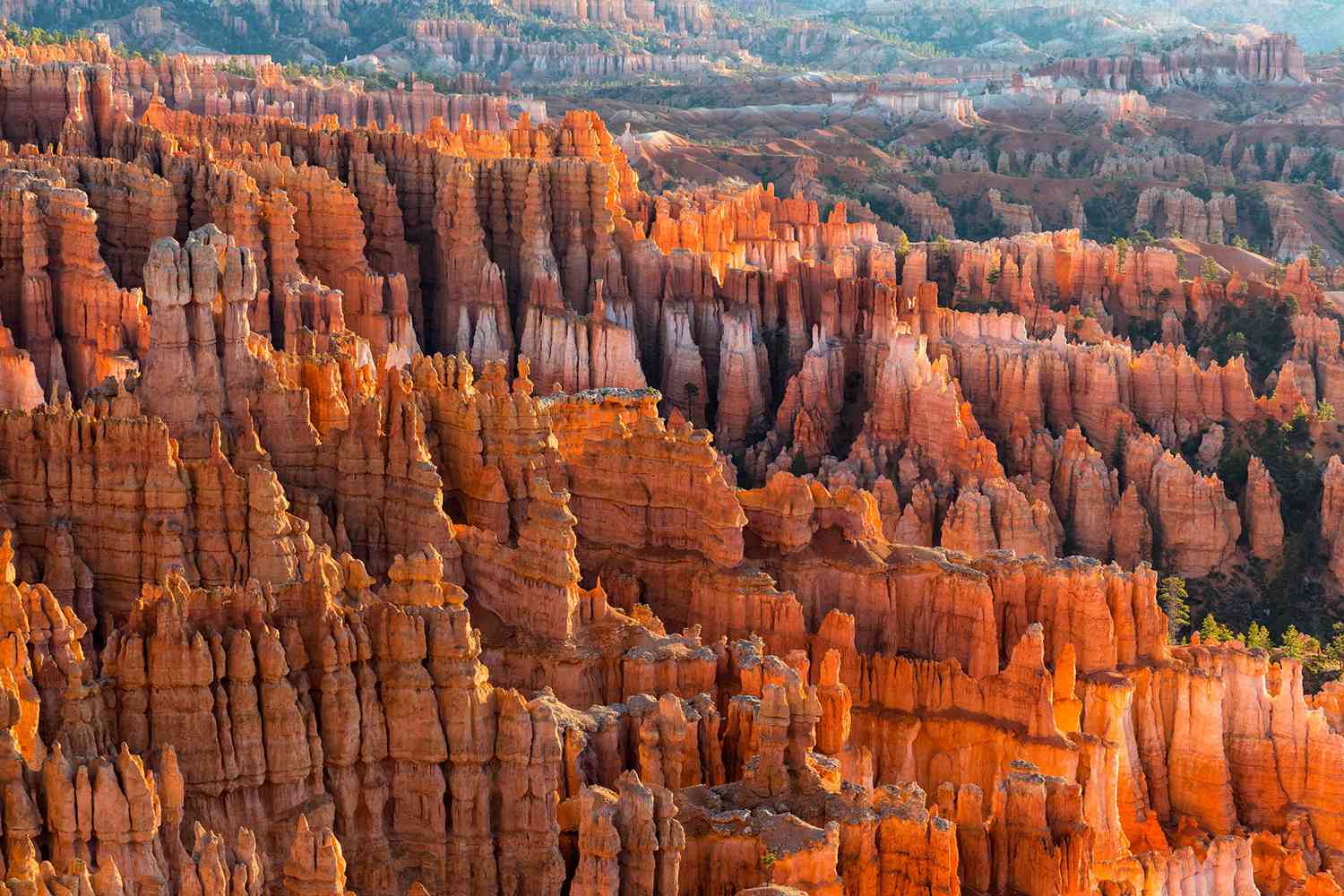
Where to Stay Near Bryce Canyon National Park
Done hiking and looking to rest your weary head? You’ve got options. The park itself is a one-stop vacation shop. Besides camping, there’s a quaint, rustic lodge at the center of the park built in the 1920s featuring cozy cabins, suites, and motel rooms, plus a dining room and gift shop. If you want to take things off-site, there are plenty of accommodation options in Bryce Canyon City (just outside the park) or in nearby Tropic or Cannonville.
North Campground
Open year-round. Reservation camping May 19th – October 7th; First-come, first-served October 8th – May 18th.
RV sites (some reservable): $30/night
Tent sites: $20/night
Sunset Campground
Sunset Campground provides 99 sites on a first-come, first-served basis April 15th – October 31st.
RV sites (reservable): $30/night
Tent sites (reservable): $20/night
Group Site (by reservation only): $55–100 depending on group size
